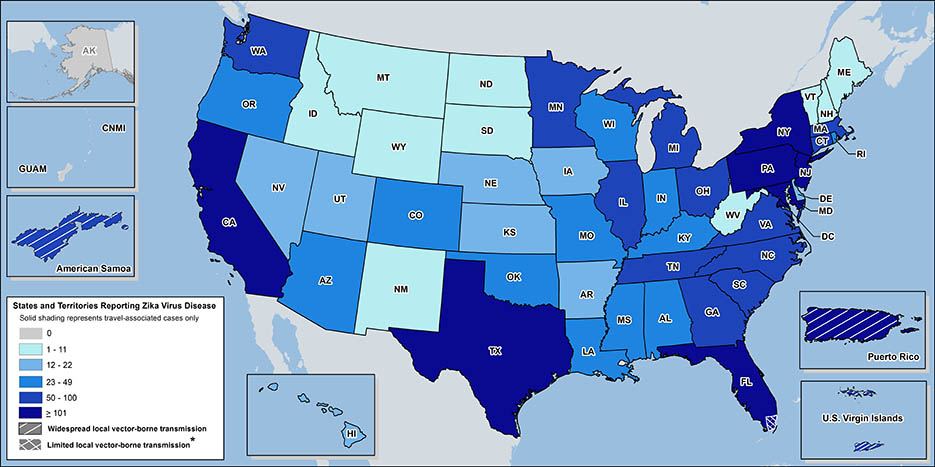Floods, Ebola, Zika and More: How Partners is Climate-Proofing Healthcare

A warming planet used to be epitomized by shrinking polar ice caps on which sad polar bears were adrift. Today, the effects are becoming much more tangible.
According to The Lancet, Britain’s leading medical journal, climate change is “the biggest global health threat of the 21st century [1].” Rising temperatures have led to higher sea levels, which in turn has led to more extreme weather events and flooding [2]. Just as the temperature has affected the seas, it has also affected the air: warmer temperatures mean an increased range for the anopheles mosquito and diseases previously restricted to specific climates are reaching new territory. This year, Massachusetts alone reported 97 Zika cases. Yet as the crisis increases, most healthcare providers are poorly prepared.
As the water rose in the aftermath of Hurricane Katrina in 2005, the generators in New Orleans’ Memorial Hospital began failing. With inoperable windows, temperatures inside the building exceeded 100 degrees. Care became chaotic, and in the following days, 147 patients died. Conditions were so bad that a number of patients were euthanized by hospital staff [3].
In 2013, Superstorm Sandy downed power lines and sent flood waters rushing through New York streets, requiring 300 patients to be evacuated from New York University’s Langone Medical Center. When one of Langone’s backup generators failed after its basement flooded, twenty babies in neonatal intensive care were evacuated, followed by the sickest adults. The evacuation took about 15 hours to complete [4].
Learning from these disruptions, Boston-based Partners HealthCare designed its 132 bed Spaulding Rehabilitation Hospital to be more resilient in the face of climate change. The ground floor of the new teaching hospital is 30 inches above the 500-year flood level, and 42 inches above the 100-year flood level. It has operable windows, so in the case of an air conditioning failure, the windows can be opened to allow for natural ventilation. Electrical equipment is on the roof, not in the basement, so it’s not susceptible to flooding.
Hubert Murray, Sustainable Initiatives Manager for Partners, said these climate-proofing measures weren’t expensive; they added about half a percent to the total cost of the building [5]. The city of Boston took note – Murray was asked to share his climate-proofing criteria, and developers are now required to develop a similar set of protocols for every new building.
Updating old hospitals will be a greater challenge. Partners is reviewing all its facilities to see what could be done to increase climate change resilience. It’s more than just moving generators from the basement; equipping valuable lab space for power outages, for example, is essential. “That’s the lesson learned from Sandy — New York lost a lot of research just from flooding. Experiments which were multi-year experiments just rendered useless overnight,” Murray said. “And since Boston is the highest recipient of NIH research funding in the country … we’re looking very carefully at our lab buildings as well as our acute care facilities.”
As the U.S. healthcare sector begins to grapple with climate change, new diseases previously unseen outside the Global South will affect care delivery. For example, laboratory-confirmed Zika virus disease cases reported to ArboNET by state or territory (as of November 2, 2016) [9] showed 97 Zika cases in Massachusetts.
In April, management at Mass General hosted a hack-a-thon, convening 200 developers to create innovative solutions to prevent, diagnose and treat Zika [8].
Before the Zika outbreak, there was Ebola, which many scientists believe was also precipitated by climate change. A 2006 study in the journal Transactions of the Royal Society of Tropical Medicine and Hygiene noted that Ebola would be more frequent with global warming due to its connection to wildlife and climate [10]. When Ebola broke out in Liberia several years later, scientists pointed to local deforestation which was bringing humans closer in contact with wildlife, which can then cause transmission between species. Increased droughts, heat waves, floods and changing rainfall may also cause wildlife to migrate away from their natural habitat and closer to humans.
We can expect a renewal of malaria, yellow fever, and dengue in Florida over the next few years as temperatures rise and the anopheles mosquito expands its range and scientists suggest there is a link between climate change and infectious disease. Cities with major airports like Boston will be affected by travelers bringing these new diseases in. Public health interventions will need to be aggressive and more innovations will be needed as the dangers of climate change become clearer. Partners Healthcare has added climate change to its top “business risks” category.
(756 words)
Sources:
- Anthony Costello et al. “Managing the health effects of climate change,” The Lancet, Vol. 373, No. 9676, p1693–1733. Accessed November 3 2016.
- Gary Cohen. “What does Climate Change Have to Do With Health Care?” Forbes, April 7, 2013. Accessed November 3, 2016.
- Fink, S. (2013). Five days at Memorial: Life and death in a storm-ravaged hospital. New York: Crown.
- Katie Valentine. “The Extraordinary Steps Health Care Providers Are Taking To Prepare For Climate Change.” Think Progress. July 30 2013. Accessed November 3 2016.
- Department of Energy, 2003 Commercial Building Energy Consumption Report.
- “Three Partners HealthCare hospitals named to list of Top 50 Greenest Hospitals in America” http://www.partners.org/Newsroom/Articles/50-Greenest-Hospitals-2015.aspx
- Zika Innovation Hack-a-Thon: April 3-6, 2016. http://www.globalhealthmgh.org/camtech/wp-content/uploads/2016/09/Zika-Innovation-Hackathon-Report-v5.pdf
- “Zika Cases Reported in the United States” Centers for Disease Control and Prevention. http://www.cdc.gov/zika/intheus/maps-zika-us.html
- Peterson, A.T., et al., 2006. Geographic potential for outbreaks of Marburg hemorrhagic fever. Am.J.Trop. Med. Hyg. 75, 9–15.





Very interesting!! I have always wondered why Spaulding was elevated like that. In terms of the Zika connection, there is certainly a growing body of evidence that the Aedes mosquito (which spreads Zika, dengue, West Nile, and chikungunya) and the anopheles (malaria) are migrating North due to a warming climate. However, with the exception of Samoa, PR, Virgin Islands, and Miami, I’m actually a bit relieved by your second figure (to date, at least)! It looks like the majority of those reported cases are actually travel-associated cases as opposed to local vector-bourne transmission (the type that would imply mosquito migration due to warming climate).
Another area that has gotten a lot of buzz for climate-related changes is Lyme Disease (http://www.nejm.org/doi/full/10.1056/NEJMp058079#t=article). While the Ixodes tick is endemic in pretty temperate climates, it is slowly taking over previously colder climates, with new outbreaks in Northern Michigan and parts of Scandinavia. This has been pretty thoroughly measured over the past 10+ years.
Great post Sarah! Hospitals aren’t the first to come to mind when thinking of businesses impacted by climate change, but it’s clear that there are a number of concerns that relate to global health and patient care. While it’s encouraging that companies like Partners have considered risks of flood and natural ventilation, many hospitals do not have the capital to invest in retrofitting their hospitals. This is particularly concerning in low income areas. These areas typically have less investment in infrastructure and are thus more impacted by natural disasters. In addition, hospitals serving low income populations have less money to invest in improvements, particularly projects that are important but not critical such as climate-proofing. As hospitals struggle with the shift to measuring outcomes and reducing costs, I am concerned that the US health system is not well positioned for addressing the impacts of climate change in the years to come.
Very fascinating, yet also frightening! I’m glad Partners is looking to precedent examples and implementing actual changes to ensure that they aren’t impacted to such a large extent. This also makes me wonder about increased widespread disease due to climate change – which potentially, like Zika, are new, exotic and thus treatments and long term impacts are largely unknown – and other impacts that it will have on the healthcare system and how we view climate change. Will we see major healthcare players become bigger advocates for climate change mitigation? Perhaps this will increase the momentum on pending regulation. Zika and similar diseases are perhaps one of the first immediate impacts that climate change has had.
Great Article. I hadn’t quite thought of the link between climate change and the spread of previously “contained” infectious disease. I happened to be in Nigeria during the last Ebola outbreak. The response of local and international public health officials was instrumental in containing its spread. However, I would like to see an open grassroots discourse aimed at stemming similar outbreaks by cultivating sustainable farming practices. Whilst not a typical medical solution, this could serve to further insulate our local and global communities from increased outbreaks by providing a “first-line of defense”, in the form of improved farming practices.